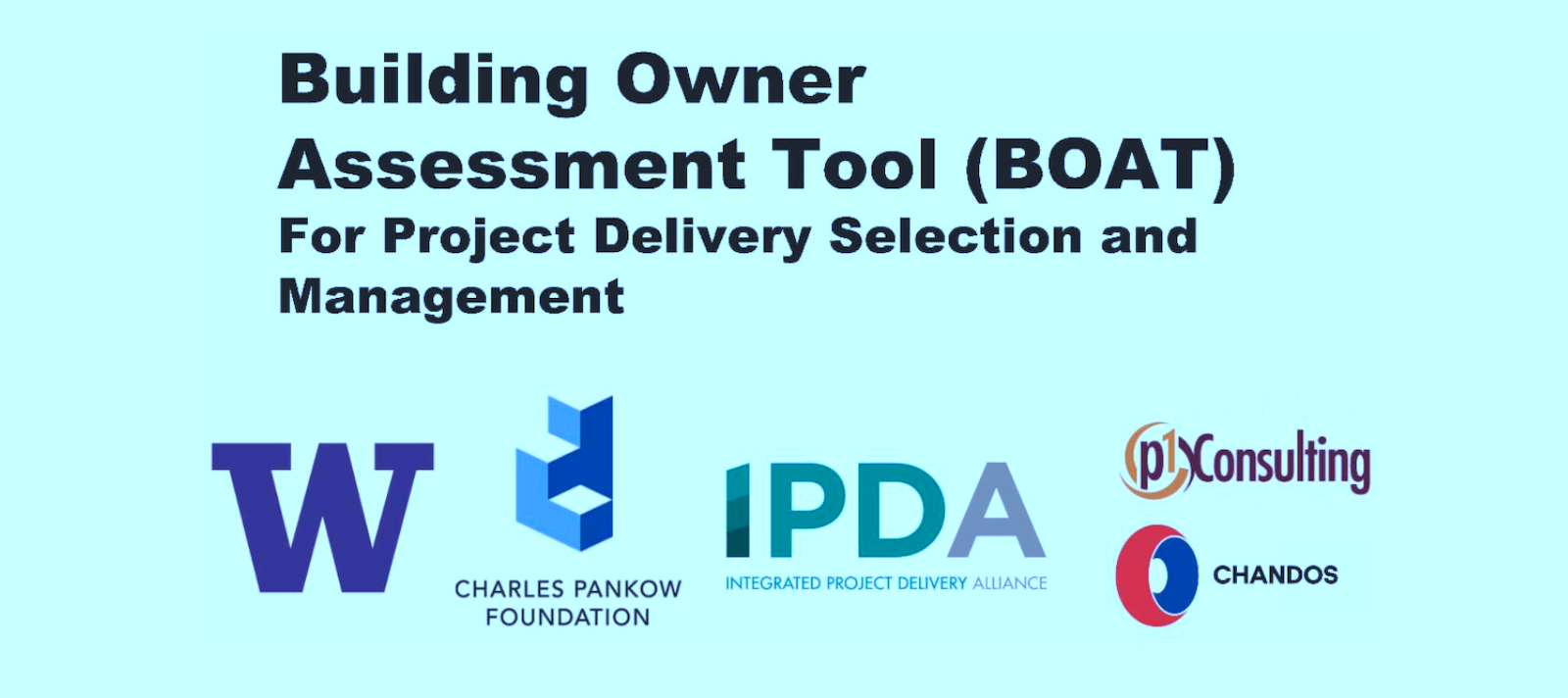The Charles Pankow Foundation (CPF) in partnership with the University of Washington's College of Built Environments, American Institute of Architects, and the Integrated Project Delivery Alliance, has unveiled a new tool, the Building Owner Assessment Tool (BOAT).
The free online tool helps building owners and project teams understand the challenges and alignments between their decision-making profile and different types of project delivery methods. Profiles are generated from rigorously researched questions and the analysis is presented in a simple spreadsheet format.
Using BOAT, building owners can reflect on their decision-making structures, cultures, and project management strategies and work with their project teams to mitigate roadblocks and pain points during project delivery.
Discussion of BOAT results fosters productive collaborative conversations identifying organizational challenges, setting expectations around the work, and designing specific processes to address challenges.
This research was conducted at the University of Washington and led by Principal Investigator Carrie Sturts Dossick, Ph.D, P.E.; Co-investigators Renée Cheng, FAIA; and Laura Osburn, Ph.D. Other team members included Lingzi Wu, Ph.D., Daniel Dimitrov, and Xianxiang Sean Zhao. Industry Champions were Markku Allison, Greg Gidez, Louise Pannetor, and Laura Stagner. Support was provided by Chandos Construction and P1 Consulting.
Related Stories
| Dec 20, 2011
Third annual Gingerbread Build-off winners announced
Nine awards were handed out acknowledging the most unique and creative gingerbread structures completed.
| Dec 20, 2011
Aragon Construction leading build-out of foursquare office
The modern, minimalist build-out will have elements of the foursquare “badges” in different aspects of the space, using glass, steel, and vibrantly painted gypsum board.
| Dec 20, 2011
HOAR Construction opens Austin, Texas office
Major projects in central Texas spur firm’s growth.
| Dec 19, 2011
HGA renovates Rowing Center at Cornell University
Renovation provides state-of-the-art waterfront facility.
| Dec 19, 2011
Chicago’s Aqua Tower wins international design award
Aqua was named both regional and international winner of the International Property Award as Best Residential High-Rise Development.
| Dec 19, 2011
Summit Design+Build selected as GC for Chicago recon project
The 130,000 square foot building is being completely renovated.
| Dec 19, 2011
USGBC welcomes new board directors?
Board responsible for articulating and upholding the vision, values, mission of organization.
| Dec 19, 2011
Davis Construction breaks ground on new NIAID property
The new offices will total 490,998 square feet in a 10-story building with two wings of 25,000 square feet each.
| Dec 19, 2011
Survey: Job growth driving demand for office and industrial real estate in Southern California
Annual USC Lusk Center for Real Estate forecast reveals signs of slow market recovery.

















